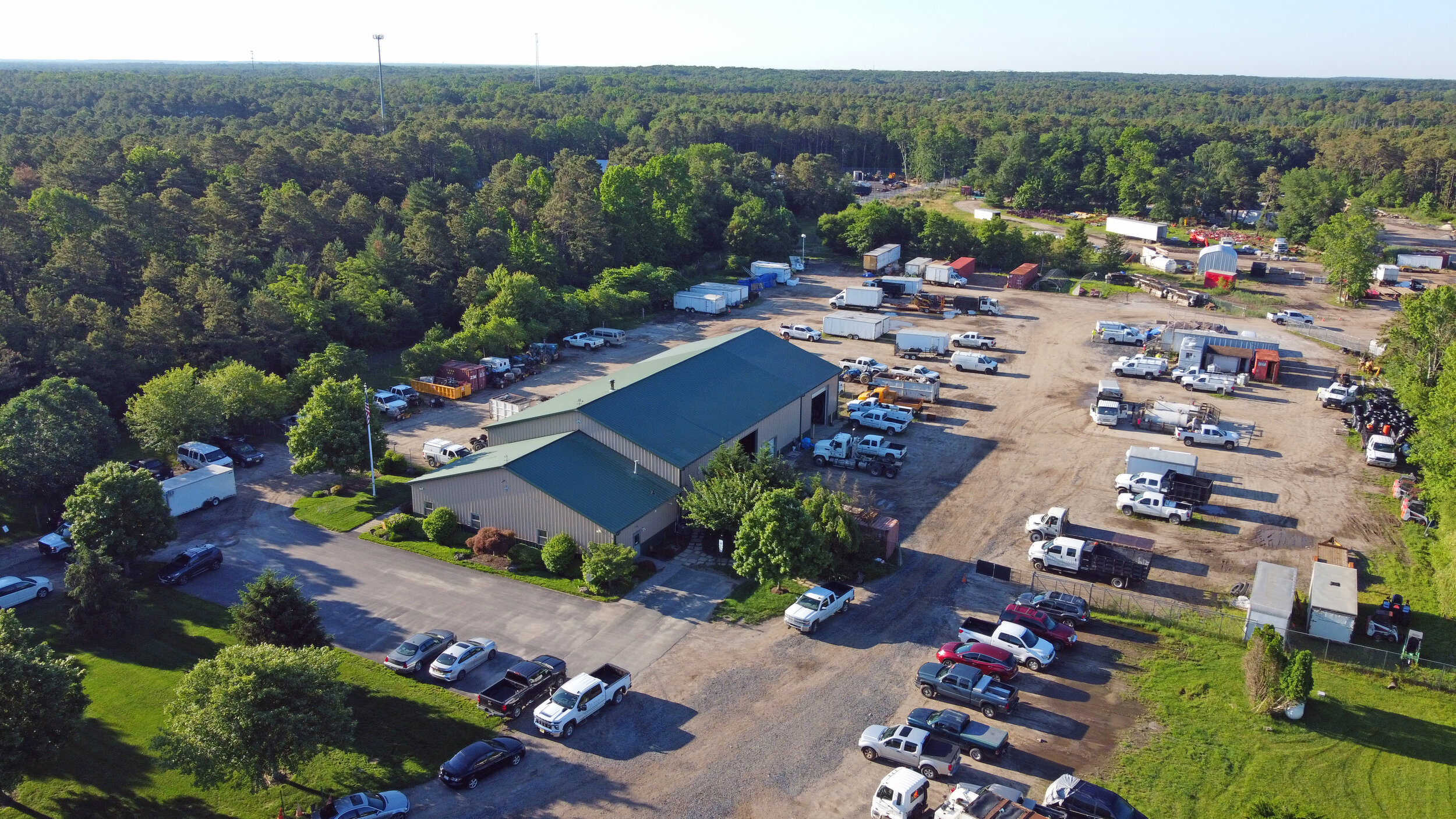Home>Garden Design>Planning Your Garden>How To Own Your Own Landscaping Business


Planning Your Garden
How To Own Your Own Landscaping Business
Modified: January 22, 2024
Learn the essential steps for planning your garden and start your own successful landscaping business. Get expert tips and advice today!
(Many of the links in this article redirect to a specific reviewed product. Your purchase of these products through affiliate links helps to generate commission for Chicagolandgardening.com, at no extra cost. Learn more)
Table of Contents
- Introduction
- Step 1: Create a Business Plan
- Step 2: Choose a Legal Structure
- Step 3: Register Your Business
- Step 4: Obtain Licenses and Permits
- Step 5: Set Up Your Office and Equipment
- Step 6: Develop a Marketing Strategy
- Step 7: Build a Network of Suppliers and Contractors
- Step 8: Hire and Train Employees
- Step 9: Set Pricing and Financial Management
- Step 10: Stay Up to Date with Industry Trends
- Conclusion
Introduction
Welcome to the vibrant world of landscaping! If you have a passion for nature, aesthetics, and creating beautiful outdoor spaces, starting your own landscaping business can be a fulfilling and profitable venture. Whether you have experience in the industry or are starting from scratch, this comprehensive guide will provide you with the essential steps to own and run a successful landscaping business.
Landscaping is a thriving industry, valued at billions of dollars globally. With more and more people recognizing the importance of a well-designed and manicured outdoor area, the demand for skilled landscapers continues to grow. By starting your own landscaping business, you have the opportunity to tap into this ever-expanding market and build a brand that caters to the needs and desires of your clients.
Running a landscaping business allows you to channel your creativity, work with your hands, and enjoy the satisfaction of transforming ordinary outdoor spaces into stunning landscapes. However, besides the artistic aspect, starting a business requires careful planning, organization, and a solid foundation. With the right combination of business acumen and landscaping expertise, you can establish a thriving enterprise in this rewarding industry.
Throughout this guide, we will provide you with a step-by-step roadmap to help you navigate the process of starting and owning your own landscaping business. From developing a comprehensive business plan to hiring and training employees, you will learn everything you need to know to establish and grow a successful enterprise in the landscaping industry.
It’s important to note that this guide will serve as a starting point, as every landscaping business is unique, and your journey will have its own challenges and opportunities. However, by following the steps outlined here and adapting them to your specific circumstances, you will be laying a solid foundation for your business and increasing your chances of long-term success.
So, are you ready to dig in and get started on the path to owning your own landscaping business? Let’s roll up our sleeves and dive into the key steps that will help you turn your passion for landscaping into a flourishing entrepreneurial venture.
Step 1: Create a Business Plan
Before you start digging into the world of landscaping, it’s crucial to have a well-thought-out business plan in place. A business plan serves as a roadmap for your venture, outlining your goals, strategies, and financial projections. It enables you to visualize the big picture and make informed decisions as you navigate the challenges of starting and running a landscaping business.
When creating your business plan, consider including the following components:
- Executive Summary: Start your business plan with a concise overview of your landscaping business. Highlight your mission statement, vision, and the unique value you bring to clients.
- Company Description: Provide a detailed description of your landscaping business. Discuss the services you offer, your target market, and any competitive advantages you have.
- Market Analysis: Conduct thorough research on the landscaping industry in your area. Identify your target market, analyze your competitors, and assess the demand for landscaping services.
- Organizational Structure: Outline the structure of your business. Determine whether you will be a sole proprietorship, partnership, limited liability company (LLC), or corporation. Identify key roles and responsibilities within your organization.
- Service Offerings: Detail the landscaping services you will provide. This may include lawn maintenance, plant installation, irrigation system installation, hardscaping, or landscape design. Highlight any specialized services that set you apart from competitors.
- Marketing and Sales Strategy: Define your target market and outline how you will reach and attract customers. Discuss your pricing strategy, advertising methods, and any partnerships or collaborations that may assist in marketing your business.
- Financial Projections: Develop a financial plan that includes projected income and expenses for the first few years of your business. Consider costs such as equipment, supplies, employee salaries, and marketing expenses.
- Operational Plan: Outline the day-to-day operations of your landscaping business. Include details on your equipment, vehicle needs, suppliers, and any subcontractors you may work with.
- Risk Assessment: Identify potential risks and challenges that your business may face, such as weather conditions, seasonality, or economic uncertainties. Develop contingency plans to mitigate these risks.
Creating a business plan requires thought, research, and careful consideration of your goals and objectives. It is a vital step in securing funding, attracting investors, and ensuring the long-term success of your landscaping business. Regularly review and update your business plan as your business evolves and grows.
Step 2: Choose a Legal Structure
Choosing the right legal structure is a crucial step in starting your landscaping business. The legal structure you select will determine how your business is operated, taxed, and managed. Each structure has its own advantages and disadvantages, so it’s important to assess your specific needs and consult with a legal professional before making a decision.
Here are some common legal structures to consider:
- Sole Proprietorship: This is the simplest and most common legal structure for small businesses. As a sole proprietor, you have complete control and ownership of your landscaping business. However, you are personally liable for the debts and obligations of the business.
- Partnership: If you plan to start your landscaping business with one or more partners, a partnership structure may be suitable. In a partnership, the business is owned and operated by two or more individuals who share the profits, losses, and liabilities.
- Limited Liability Company (LLC): An LLC provides a flexible legal structure that combines the benefits of a corporation and a partnership. It offers limited liability protection to its owners, known as members, while allowing for pass-through taxation.
- Corporation: A corporation is a separate legal entity from its owners, known as shareholders. It offers the most protection against personal liability, but it requires more formalities and may be subject to double taxation.
Consider your long-term goals, risk tolerance, and desired level of control when choosing a legal structure for your landscaping business. Consult with an attorney or a business advisor to ensure you understand the legal and tax implications of each structure.
Additionally, you will need to register your business and obtain the necessary permits and licenses. Consult with your local government or small business administration to determine the specific requirements in your area. It’s important to comply with all legal and regulatory obligations to avoid potential penalties or legal issues down the line.
Choosing the right legal structure for your landscaping business is an important decision that will impact your operations, taxation, and liability. Take the time to thoroughly research and weigh your options before making a choice. Seeking professional advice can provide valuable guidance and ensure that your legal structure aligns with your business goals.
Step 3: Register Your Business
Registering your landscaping business is a critical step that establishes it as a legal entity and allows you to operate in compliance with the law. The registration process may vary depending on your location and the legal structure you have chosen. Here are some essential steps to follow when registering your business:
- Choose a Business Name: Select a unique and memorable name for your landscaping business. Ensure that it represents your brand and resonates with your target audience. Check with your local government to ensure that the name is available and not already in use.
- Register with the appropriate government agencies: Visit your local government office or the relevant agency responsible for business registration. Provide the necessary documentation, such as your business plan, identification, and any required fees. Register your business name and obtain any required permits or licenses specific to the landscaping industry.
- Apply for an Employer Identification Number (EIN): An EIN, also known as a federal tax identification number, is required for most businesses. It is used for tax purposes and allows you to hire employees, open business bank accounts, and file taxes. You can apply for an EIN online through the Internal Revenue Service (IRS) website.
- Register for State and Local Taxes: Depending on your location, you may be required to register for state and local taxes. This may include sales tax, payroll tax, or other applicable taxes. Contact your state’s revenue department or tax agency for information on how to register and remit taxes.
- Obtain Business Insurance: Protect your landscaping business from potential risks by obtaining the necessary insurance coverage. This may include general liability insurance, workers’ compensation insurance, commercial auto insurance, and property insurance. Consult with an insurance agent to determine the appropriate coverage for your specific business needs.
Registering your business and obtaining the necessary permits and licenses not only ensures that you are operating legally, but it also instills confidence in your potential clients. It demonstrates that you are a professional and trustworthy business committed to providing quality services.
Remember to keep all of your registration documents, licenses, and permits in a safe and easily accessible location. It’s also a good idea to set up a system to track any renewal dates to ensure that you remain in compliance with all legal requirements.
By taking the time to register your business and obtain the necessary legal documentation, you are setting the stage for a successful and legitimized landscaping enterprise.
Step 4: Obtain Licenses and Permits
Obtaining the necessary licenses and permits is a crucial step in establishing your landscaping business and ensuring compliance with local regulations. The specific licenses and permits required may vary depending on your location and the services you offer. Here are some common licenses and permits you may need to acquire:
- Business License: Most cities and counties require a general business license to operate legally. Contact your local city or county clerk’s office to inquire about the requirements and application process.
- Contractor’s License: If you plan to offer specialized landscaping services, such as installation of irrigation systems or construction of structures, you may need to obtain a contractor’s license. The requirements for a contractor’s license vary by state, so check with your local licensing board for the specific qualifications and application process.
- Home Occupation Permit: If you plan to operate your landscaping business from your home, you may need to obtain a home occupation permit. This permit allows you to run a business out of your residential property and ensures compliance with local zoning regulations.
- Environmental Permits: Depending on the nature of your landscaping work, you may need to obtain environmental permits. This may include permits related to water usage, pesticide application, tree removal, or handling of hazardous materials. Contact your local environmental agencies or departments for information on the necessary permits and requirements.
- Vehicle and Equipment Permits: If your landscaping business involves the use of commercial vehicles or specialized equipment, you may need to obtain permits or registrations for them. This includes having the appropriate vehicle insurance, proper vehicle signage, and complying with local transportation regulations.
It’s essential to research and understand the specific licenses and permits required for your area and the services you offer. Visit your local government’s website or contact the appropriate department to obtain the necessary information and application forms. Be prepared to provide documentation, such as proof of insurance, identification, and any required fees.
Obtaining licenses and permits demonstrates your commitment to running a legal and professional landscaping business. It ensures that you comply with safety regulations, protect the environment, and meet the expectations of your clients.
Remember that licensing and permit requirements may change over time, so it’s important to stay informed and keep your documentation up to date. Failure to obtain the necessary licenses and permits can result in fines, legal issues, and damage to your reputation. Always prioritize the proper legal documentation and compliance in order to establish a solid foundation for your landscaping business.
Step 5: Set Up Your Office and Equipment
Setting up your office and acquiring the necessary equipment is a critical step in establishing a functional and efficient landscaping business. A well-equipped office and a comprehensive inventory of tools and equipment will enable you to provide quality services to your clients. Here are some key considerations:
Office Space: Determine your office needs based on the size of your business and the scale of operations. If you are starting on a smaller scale, a home office or a shared workspace may be sufficient. As your business grows, you may consider leasing or purchasing commercial space to accommodate your administrative tasks, client meetings, and storage needs.
Equipment: Invest in high-quality tools and equipment that are essential for your landscaping services. This may include lawn mowers, trimmers, blowers, hand tools, irrigation equipment, and more. Research reputable brands, consider the specific needs of your business, and prioritize durability and efficiency.
Vehicle and Trailers: Depending on the size and scope of your landscaping business, you may need commercial vehicles and trailers to transport equipment and materials. Choose vehicles that are suitable for your needs, ensure they are properly maintained, and consider branding them with your business logo for increased visibility.
Office Supplies: Stock your office with essential supplies such as computers, printers, copiers, software, stationery, and filing systems. Invest in accounting software to keep track of your finances and invoicing, and consider a customer relationship management (CRM) system to manage client information and appointments efficiently.
Storage: Depending on the equipment and inventory you have, you may need proper storage solutions. This can include a dedicated storage area in your office, secure sheds, or rental storage units to keep your tools, equipment, and supplies organized and protected.
Safety Equipment: Prioritize the safety of your team and clients by providing personal protective equipment (PPE) such as gloves, safety glasses, hard hats, and work boots. Ensure your team is trained on safety procedures and follows best practices to prevent accidents and injuries.
Office Technology: Embrace technology to streamline your operations and enhance your efficiency. Consider investing in software for project management, scheduling, invoicing, and communication. Utilize cloud-based solutions for file storage and data backup to ensure your important information is secure.
Insurance Coverage: Protect your business with appropriate insurance coverage. General liability insurance, property insurance, and workers’ compensation insurance are essential to safeguard your assets and mitigate any potential risks or damages.
Take the time to plan your office setup and equipment needs to optimize your workflow and enhance productivity. Regularly maintain and upgrade your equipment to ensure smooth operations and minimize downtime.
By setting up a well-equipped office and having the necessary tools and equipment, you will be able to provide high-quality services to your clients, attracting and retaining their trust and satisfaction.
Step 6: Develop a Marketing Strategy
A well-developed marketing strategy is essential for the success and growth of your landscaping business. It helps you reach your target audience, generate leads, and build a strong brand presence. Here are some key elements to consider when developing your marketing strategy:
Identify Your Target Market: Determine who your ideal customers are. Consider factors such as demographics, location, and specific landscaping needs and preferences. This will help you tailor your marketing efforts to effectively reach and engage with your target audience.
Create a Compelling Brand Image: Develop a strong and memorable brand identity that reflects your values, expertise, and commitment to quality. Design a professional logo, create a consistent visual aesthetic, and establish a brand voice that resonates with your target market.
Build an Optimized Website: A professional and user-friendly website is crucial for establishing credibility and attracting potential clients. Include relevant information about your services, showcase your past projects, and provide clear contact information. Optimize your website for search engines to improve your online visibility.
Utilize Local Search Engine Optimization (SEO): Make sure your landscaping business appears in relevant local search results. Optimize your website and online listings with local keywords, create informative and valuable content, and encourage client reviews to enhance your search engine rankings.
Invest in Online Advertising: Consider online advertising methods such as pay-per-click (PPC) advertising or social media advertising. These targeted platforms can help you reach a wider audience and generate leads. Monitor and fine-tune your advertising campaigns to maximize their effectiveness and return on investment.
Build an Online Presence: Leverage the power of social media platforms to engage with your target audience. Create and maintain profiles on platforms such as Facebook, Instagram, and LinkedIn. Regularly share captivating content, customer testimonials, before-and-after photos, and industry tips to showcase your expertise and demonstrate your value.
Network and Collaborate: Join local business organizations and associations to expand your professional network. Collaborate with complementary businesses such as nurseries, garden centers, or home improvement stores to cross-promote and reach a wider customer base. Attend industry events and participate in community initiatives to further establish your presence.
Implement Referral Programs: Encourage satisfied clients to refer your services to their friends, family, and neighbors. Offer incentives such as discounts or free services for successful referrals. A strong referral program can lead to a significant growth in your customer base.
Measure and Track Results: Regularly assess the effectiveness of your marketing efforts. Use analytics tools to track website traffic, lead generation, and customer engagement. Make adjustments and improvements based on the data to optimize your marketing strategy and achieve better results.
Remember, a comprehensive marketing strategy requires consistency, monitoring, and adaptation. Continuously test different approaches, analyze results, and refine your tactics to find the most effective methods for promoting your landscaping business.
By implementing a well-rounded marketing strategy, you will increase brand awareness, attract new clients, and position your landscaping business as a leader in the industry.
Step 7: Build a Network of Suppliers and Contractors
Building a strong network of reliable suppliers and contractors is crucial for the success of your landscaping business. Working with trusted and efficient partners ensures that you have access to high-quality materials, equipment, and specialized expertise when needed. Here are some key steps to build and maintain a strong network:
Research and Identify Reliable Suppliers: Conduct thorough research to find reputable suppliers for your landscaping materials and equipment. Look for suppliers who offer competitive pricing, a wide range of products, and reliable delivery services. Establish relationships with multiple suppliers to ensure a consistent and uninterrupted supply chain.
Negotiate Favorable Terms: Negotiate pricing, delivery schedules, and payment terms with your suppliers. Building a good working relationship will often result in mutually beneficial arrangements. Maintain open communication and provide feedback to suppliers to enhance the quality and efficiency of your partnership.
Collaborate with Other Contractors: Develop relationships with contractors who specialize in areas complementary to your landscaping services. This can include electricians, plumbers, tree surgeons, or paving specialists. Collaborating with these professionals can expand your service offerings and provide a more comprehensive solution to your clients.
Establish a Contractor Certification Process: Verify the qualifications, reputation, and insurance coverage of contractors before partnering with them. Request references and examples of their previous work to ensure they meet your standards of quality and professionalism. Maintain a list of trusted contractors that you can rely on for specialized services.
Attend Industry Trade Shows and Events: Participate in trade shows, conferences, and networking events in the landscaping industry. These events provide opportunities to meet suppliers, contractors, and industry professionals. Take the time to establish connections, exchange knowledge, and keep up with the latest trends and advancements in the industry.
Maintain Strong Communication: Communication is key when working with suppliers and contractors. Clearly communicate your expectations, project requirements, and timelines. Regularly check in with your partners to ensure smooth coordination and address any issues or concerns promptly.
Stay Informed About New Products and Techniques: Continuously educate yourself about new landscaping products, materials, and techniques. Building a strong network also means staying up to date with industry advancements. Attend workshops, seminars, or online courses to expand your knowledge and provide the best services to your clients.
Build Trust and Long-Term Relationships: Cultivating trust and long-term relationships with your suppliers and contractors is invaluable. Deliver on your promises, pay invoices promptly, and maintain open lines of communication. Showing appreciation and loyalty will solidify your network and open doors for future collaborations and opportunities.
Remember, building a network of reliable suppliers and contractors requires time, research, and nurturing. Continuously assess your partnerships, seek feedback, and make adjustments as needed to ensure the highest level of quality and efficiency in your landscaping projects.
By establishing strong professional relationships, you will have access to the resources, expertise, and support needed to deliver exceptional results to your clients, ultimately contributing to the success of your landscaping business.
Step 8: Hire and Train Employees
Hiring and training competent and dedicated employees is crucial to the success of your landscaping business. Building a reliable workforce allows you to take on more projects, provide exceptional service, and maintain a positive reputation in the industry. Here are some key steps to effectively hire and train employees:
Assess Your Staffing Needs: Determine the number and types of employees you need based on the size and scope of your landscaping projects. Consider positions such as crew leaders, landscapers, irrigation specialists, and administrative staff. Create detailed job descriptions for each role to ensure you attract the right candidates.
Recruit and Attract Talent: Develop a recruitment strategy to attract qualified individuals to your landscaping business. Utilize online job boards, social media platforms, referrals, and industry-specific websites to advertise your job openings. Attend job fairs and reach out to local vocational schools or trade programs to connect with potential candidates.
Conduct Thorough Interviews: Conduct comprehensive interviews to evaluate candidates’ skills, experience, and cultural fit with your business. Ask questions that assess their knowledge of landscaping techniques, ability to work in a team, and problem-solving skills. Consider practical tests or trial periods to observe their capabilities firsthand.
Provide Proper Training: Develop a structured training program to onboard new employees. Train them on your company’s processes, safety protocols, customer service standards, and best landscaping practices. Offer hands-on training, provide access to industry resources and certifications, and encourage continuous learning and professional growth.
Cultivate a Positive Work Environment: Foster a positive work culture that promotes teamwork, open communication, and mutual respect. Recognize and reward hard work and achievements to boost employee morale and motivation. Encourage a safe and inclusive workplace that values diversity and encourages creativity.
Establish Clear Expectations: Set clear performance expectations and job responsibilities for your employees. Provide regular feedback and conduct performance reviews to assess their progress and address any areas for improvement. Regularly communicate your business goals and objectives to align your team with your vision.
Invest in Proper Equipment: Equip your employees with the tools and equipment they need to perform their tasks efficiently and safely. Regularly maintain and replace equipment as needed to ensure optimal performance and minimize downtime.
Delegate Responsibilities: Delegate tasks and responsibilities to empower and develop your employees’ skills and expertise. Encourage ownership and autonomy while providing support and guidance when needed. Trusting your team’s abilities will foster growth and allow you to focus on other aspects of your business.
Maintain Compliance with Employment Laws: Familiarize yourself with employment laws and regulations to ensure your hiring and employment practices are in compliance. This includes proper documentation, adherence to minimum wage laws, overtime compensation, and workplace safety measures.
Remember, building a strong and skilled workforce takes effort and ongoing investment. By hiring the right individuals, providing comprehensive training, and nurturing a positive work environment, you’ll create a team of dedicated professionals who will contribute to the growth and success of your landscaping business.
Step 9: Set Pricing and Financial Management
Setting the right prices for your landscaping services and implementing effective financial management practices are crucial for the financial success and sustainability of your business. Here are the key steps to consider when setting prices and managing your finances:
Understand Your Costs: Begin by accurately calculating your costs for labor, materials, equipment, overhead, and other expenses. This will help you determine a baseline price for your services and ensure that you cover all your expenses while generating a profit.
Research the Market: Analyze the pricing models of your competitors to ensure your prices are competitive and reflect the value you provide. Consider factors such as your unique selling proposition, the quality of your work, and customer demand when setting your pricing structure.
Determine Pricing Strategies: Choose a pricing strategy that aligns with your business goals and target market. Common strategies include cost-plus pricing, market-based pricing, value-based pricing, or a combination of these approaches. Take into account factors such as seasonal demand, project complexity, and desired profit margins.
Consider Upselling and Add-On Services: Increase your revenue potential by offering upsells and additional services to your clients. This can include landscaping enhancements, irrigation system installations, or ongoing maintenance contracts. Educate your clients on the benefits of these services to encourage them to opt for higher-priced packages.
Implement Effective Financial Management: Keep accurate financial records and implement efficient bookkeeping practices. Use accounting software to track income, expenses, and cash flow, and regularly review financial reports to monitor the financial health of your business. This will provide valuable insights to make informed decisions and ensure sustainable growth.
Manage Cash Flow: Cash flow management is essential for the smooth operation of your landscaping business. Develop a thorough understanding of your cash inflows and outflows, project timelines, and billing cycles. Implement clear payment terms and consider offering incentives for prompt payment to maintain a healthy cash flow.
Monitor and Control Costs: Regularly review and evaluate your expenses to identify areas where you can reduce costs or improve efficiency. Minimize waste, negotiate better deals with suppliers, and explore cost-effective alternatives without compromising the quality of your services.
Plan for Taxes: Familiarize yourself with tax regulations and obligations for your landscaping business. Consult with a tax professional to ensure compliance and proper tax planning. Set aside a portion of your earnings for taxes to avoid any financial surprises or penalties.
Seek Professional Financial Advice: Consider working with an accountant or financial advisor who specializes in small businesses. They can provide valuable insights, assist with tax planning, aid in budgeting and forecasting, and offer guidance on financial strategies to maximize profitability.
By setting appropriate prices and implementing sound financial management practices, you will establish a strong financial foundation for your landscaping business. Regularly review and adjust your pricing and financial strategies as your business grows and market conditions change.
Step 10: Stay Up to Date with Industry Trends
In the ever-evolving world of landscaping, it’s crucial to stay informed about the latest industry trends and advancements. Keeping up with industry trends allows you to stay competitive, provide innovative solutions to your clients, and adapt your business accordingly. Here are some key steps to stay up to date with industry trends:
Attend Industry Events and Conferences: Participate in landscaping industry events and conferences, both locally and nationally. These gatherings provide opportunities to learn from industry experts, explore new products and technologies, and network with peers. Stay engaged and seek knowledge from those who are driving innovation in the field.
Join Professional Associations and Organizations: Become a member of professional landscaping associations or organizations. These groups provide access to valuable resources, industry publications, and educational opportunities. Engage with fellow professionals, participate in discussions, and stay connected with the latest developments in the industry.
Tap into Online Resources: Take advantage of online resources such as industry-specific websites, blogs, forums, and social media groups. Follow industry influencers, read informative articles, and participate in online discussions. These platforms offer insights into emerging trends, best practices, and solutions to common challenges.
Network with Peers: Build connections with other landscaping professionals in your area. Attend local networking events, join professional groups, and engage in conversations with fellow landscapers. Share knowledge, experiences, and ideas to learn from one another and gain valuable insights into industry trends in your specific region.
Subscribe to Industry Publications: Subscribe to industry magazines, newsletters, and journals. These publications often feature articles on the latest trends, case studies, and cutting-edge techniques. Stay informed about new technologies, design approaches, sustainable practices, and business strategies that can give you a competitive edge.
Continue Learning and Professional Development: Pursue continuous learning opportunities to enhance your skills and knowledge. Attend workshops, seminars, and training programs that focus on current industry trends and advancements. Explore certifications and courses to stay updated on the latest techniques, sustainability practices, and technological innovations.
Track Competitors and Innovators: Keep an eye on your competitors and industry innovators. Monitor their projects, services, and marketing strategies. Study their successes and failures and identify areas where you can innovate and differentiate your own business.
Embrace Sustainable Practices: Stay informed about sustainable landscaping practices and environmental regulations. The demand for eco-friendly and sustainable solutions is growing, and clients often prefer businesses that prioritize sustainability. Stay up to date with green landscaping trends, native planting techniques, water conservation methods, and low-impact design approaches.
Regularly Assess and Update Your Services: Regularly review and evaluate your services to ensure they align with current industry trends and client preferences. Consider adding new services or refining existing ones based on market demands. Stay adaptable and responsive to changing customer needs.
By staying up to date with industry trends, you can position your landscaping business as a leader in the field and anticipate the needs of your clients. Embrace innovation, continue learning, and adapt your services to stay relevant and meet the evolving expectations of your target market.
Conclusion
Congratulations! You are now equipped with a comprehensive guide to owning and running a successful landscaping business. Starting your own landscaping venture requires careful planning, strategic decision-making, and continuous effort. It’s a journey that combines your passion for nature and creativity with the practical aspects of business management.
Throughout this guide, we have covered essential steps, from creating a business plan to staying up to date with industry trends. We emphasized the importance of understanding your market, building a strong network, and providing exceptional service to your clients. Remember that each step is interconnected and contributes to the overall success and growth of your landscaping business.
As you embark on this exciting journey, keep in mind that challenges will arise, and the landscaping industry will continue to evolve. Stay proactive and adapt to changing trends, emerging technologies, and evolving client expectations. Continuously seek knowledge, invest in professional development, and build a network of mentors and peers who can offer guidance and support.
Above all, stay passionate about what you do. Landscaping is a unique and rewarding field that allows you to create beautiful outdoor spaces and enhance the lives of your clients. Your dedication to delivering top-quality results, maintaining strong relationships with clients and suppliers, and staying ahead of the curve will set you apart from competitors and propel your business to new heights.
Take the knowledge and insights gained from this guide and customize them to fit your unique circumstances and aspirations. Success in the landscaping industry requires a combination of business acumen, creative thinking, and a commitment to excellence.
Now it’s time to take action and make your landscaping business a reality. Embrace the challenges, seek opportunities for growth, and continuously strive to provide outstanding service. With determination, perseverance, and the right strategies in place, you can build a thriving landscaping business that brings beauty and joy to the outdoor spaces in your community.










